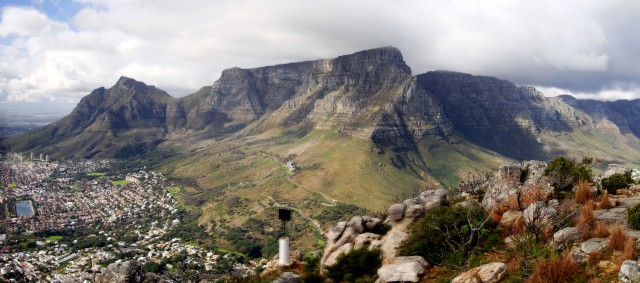 the Travel Enthusiast
the Travel Enthusiast
- 03 Mar
Adam in Amazing Places | 1 COMMENTCape Town, The Metropolis of The Southern Atlantic
Cape Town kept its tolerance even among hard times
Cape Town always had more liberal spirit than the rest of the country. Numerous cultures of South Africa didn’t survived during the the apartheid period, because many artists both black and white were either persecuted or exiled. However, in the middle of the 1990’s, South Africa rediscovered its roots, Cape Town becoming a scene of a flourishing culture. There are always new art galleries and clubs being opened, concerts are very common all around the city, and theaters and museums are filled with people.
When the first white people, the Dutch, arrived at the shores called “Cape of Good Hope” in the 18th century when the Khoikhoi and the Hottentot tribes had many sheep herds, and the San people, also known as “bushmans”, haunted the country searching for goods. The first colonists brought slaves from Eastern Africa, particularly from Madagascar and from countries from the Gulf of Bengal, each of them bringing different types of cultures and religions.
A Place of Supplies
The Portuguese explorer Bartolomeou Diaz was the first who seen the Cape of Good Hope in 1488, but only in 1647 the survivors of the Haarlem ship, which drowned in the Table Gulf, herd about the vast extreme point of the earth and were enthusiastic about the place. The Dutch East India company organized an expedition under the command of Jan Van Riebeeck to establish a settlement, In April 7, 1652,
Riebeeck installed the Dutch Flag and choose that place for a little fortification with a vegetable garden. From that moment on, ships that where heading to Asia could supply their own reserves with fresh vegetables, fruits, meat, and wine.
Slowly but surely, other European states realized the importance of Cape Towns strategic point. In 1781, the British tried to conquer the settlement but the Dutch with the help of the French managed to protect the territory. These after a while launched an true location boom, when the city eventually was taken by the British in 1795, the former settlement with 200 houses already had become a city with over a 1.000 of buildings, most of them being french and british style.
In 1814, after many battle, the Cape territory has become a British Colony. New masters abolished slavery in 1834 and after a short while most people with Dutch origins left the place for good. British liberalism manifested again after 1910, when South Africa had become independent.
- Flights
- Hotels
- Packages
- Cars
- Cruises
travel search by Travelgrove (get this widget)When the city could not avoid apartheid anymore in 1972, the place had only 6 black counselors. The council faced constantly against the political regime and even earned victory. In 1985, they managed to proclaim equality for everybody in the face of law. But only the international economic pressure and the freedom of Nelson Mandela from the prison of Robben Island brought major political changing in 1990. Today, the former prison is a museum.
At the National Gallery numerous pictures and documents are kept about the miserable ghetto life of Afro-Africans from the 1950’s. There are also 6.500 works of old locals exposed, while the expositions of South African contemporary art are impressive.
Quays, Quays
At the northern part of “Garden District” between Strand and Wale street lies the very popular commercial center with wonderful magazines, bars, and cafes. The point of the center is Greenmarket, which is the most frequented part of Cape Town. Around the center there are many fascinating houses with art deco style, inclusive the Administration building with its figurative ornament, representing plants and animals.
At the eastern part from the center, close to the train station, lies a pentagonal castle constructed between 1666 and 1679 which serves as the oldest building in South Africa.
Although it was somewhat neglected in the past, Victoria and Albert Quay reinvigorated in present time, being beautifully renovated. Restaurants, bars, jazz clubs flourished at the quay, being at the seaside, where you can safely roam at nights.
The last attraction are the two oceans with its table mountain, which arguably is the symbol of the city.
You might also like





Viva la Carnival!!!